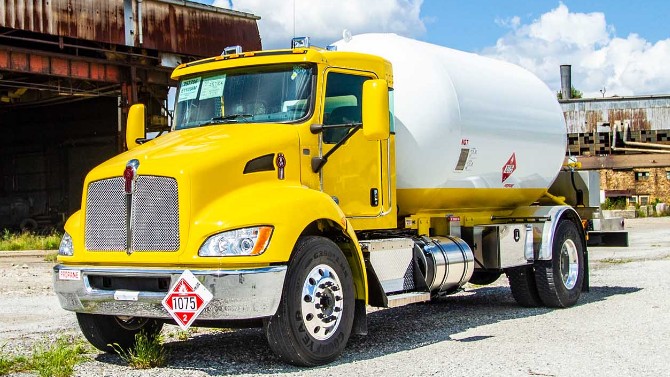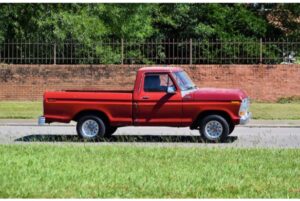
What is a Bobtail Truck – Is It Dangerous?
A bobtail truck does not have a trailer attached. Bobtailing, by definition, means driving a cargo-carrying truck (semi-truck) without a trailer.
What Does Bobtailing Mean?
A “bobtail” also refers to a straight truck transporting (and sometimes running on) propane gas. This is a term designated by the U.S. Department of Energy.
What is Bobtailing and Can It Be Dangerous?
Bobtailing is when a semi-truck is driving on the road without a trailer. This is something that happens whenever drivers are on the way to pick up a load and they don’t have anything that they can transport to that location with them.
Is bobtailing dangerous? It can be. And, because it creates driving conditions that are very different from what a loaded semi-truck experience, it can cause drivers to make errors that lead to accidents. Since semi-trucks are larger and heavier than passenger cars, anytime they’re involved in an accident, the potential for serious injuries or worse is very high.
Fortunately, bobtailing is the exception and not the rule for truck drivers. Since driving a semi-truck without a load is a waste of time and money, it only happens when absolutely necessary.
The other good news is that drivers have training on how to drive when bobtailing. Plus, they learn how to expect their truck to handle differently when not loaded. Does this stop all accidents? No, but it does make an impact and any impact that reduces semi-truck accidents is a good thing.
Bobtail Truck Accidents
Although truck drivers are held to high standards of safety, bobtailing is not against any laws. After all, every truck must travel without cargo at some point or another.
Additionally, while truck drivers are specially trained for the job, they often have less experience with bobtail trucks, which actually require more skill and expertise to drive safely.
The result is a higher risk of collision and harm to other drivers on the road.
What Are My Rights After a Bobtail Truck Accident?
Although bobtail trucks may be more difficult to maneuver, it is still the driver’s responsibility to operate their truck safely without risking harm to others. It is also the trucking company’s responsibility to make sure their drivers are well-trained and not rushed or overworked.
If you are injured in a collision with a truck because of the driver’s negligence, whether it is bobtailing or not, you can likely sue both the driver and their employer. Even if you were partly at fault, you may have a case if the truck driver shared in the blame.
Truck accidents can cause lasting injuries and even permanent disability. You have the right to be compensated for your medical bills, lost wages, and reduction in earning capacity. You may also receive payment for your pain and suffering.

How Does It Change the Way a Semi-Truck Handles?
When a semi-truck doesn’t have a trailer, most of its weight is on its front wheels. Trucks are designed specifically in this manner. Primarily, so that when they have a heavy trailer on, the weight is counterbalanced.
The problem is that when a truck has no trailer, there’s a lot of weight on the front tires without much on the rear tires. That makes handling the truck a challenge. Plus, it handles very differently from how it would if it were loaded with a trailer.
The main issue with bobtailing is that a truck cannot brake as hard since the rear wheels will not have as much traction. That means a bobtailing truck will require more distance to come to a stop which increases the chance of an accident if a driver isn’t careful.
How Driver Fatigue Can Lead to a Semi Truck Accident
With more than 2 million semi-trucks transporting goods throughout the U.S. every year, there are going to be many accidents. The results of any of those semi-truck accidents can be truly devastating for everyone involved. There are a lot of different causes of these accidents, but one of the leading causes is Driver Fatigue. Let’s take a look at how driver fatigue plays a crucial role in semi-truck accidents.
The Difference Drowsiness Makes
Driver performance is significantly affected by lack of sleep. The more drowsy the driver is, the worse their reaction times are and their hazard awareness is also diminished. It’s also more difficult to keep your attention on the road when tired.
The effect lack of sleep produces, has been compared to driving while over the federal blood alcohol content limit. Therefore, if you’re driving when you haven’t slept for 20 hours or more, it’s the equivalent of a 0.08 percent blood alcohol concentration. This is the federal legal limit and shows how dangerous drowsiness can be on driver performance.
Working Hours
Truck drivers are restricted in the hours they are allowed to work. The Federal Motor Carrier Safety Administration (FMCSA), which is part of the Department of Transportation, oversees the hours of service regulations. This limits truck drivers to 70 hours over 8 consecutive working days.
Drivers can also not operate their trucks for more than 11 consecutive hours. Despite these rules, the pressure drivers often face can leave them suffering fatigue.
Crash Study
The FMCSA was behind a 2007 study into accidents involving large trucks. The nearly 3-year study looked into the estimated 12,000 fatal accidents involving trucks. They categorized the cause of accidents into four main reasons:
- Non-performance – impaired through falling asleep, health issues, or other reasons.
- Recognition – lack of attention from the driver.
- Decision – misjudging the situation.
- Performance – poor control of the vehicle.
Drowsiness could play a part in all four of these categories. The study concluded that the two major factors which contribute to these accidents were fatigue and the demands on the driver which require them to hit deadlines. These problems, when added to other issues like weather conditions or experience, significantly added to the likelihood of a crash occurring.
Fatigue was directly responsible for 13 percent of accidents. It could have contributed to many more accident types, however. Like traveling too fast, inattention, distractions, and inadequate surveillance.
While it’s possible to check blood alcohol content, there isn’t a test for driver fatigue. This means that the problem is likely to be significantly larger than people understand.
Are You Too Tired?
It’s important to realize when you’re suffering from fatigue before you find yourself in a situation where you need a good lawyer. If you’re struggling to keep your eyes open or frequently yawning, these are obvious signs which shouldn’t be ignored.
There are more subtle signs that lack of sleep is affecting your performance, like not being able to remember the last few miles. If you miss turnings or have problems maintaining your speed, it’s better to get your semi-truck off the road.
Don’t let the demands of the job cause something to happen that you will regret forever.
Can Truck Driver Fatigue Laws Prevent Accidents?
Truck driver fatigue laws were enacted to help prevent one of the major causes of truck accidents, tired drivers. Anybody who has ever gone on a long drive can probably tell you that it’s very easy to get tired on the road. After driving, mile after mile, highway hypnosis can set it in.
When this happens, your brain doesn’t work as well as it does normally. In fact, your brain functions in a manner closely resembling someone who is asleep. [1] Delayed reaction times and a feeling like you are in a haze, are a recipe for disaster when you’re on the road.
However, when you happen to be behind the wheel of a semi-truck carrying a huge load, the danger is only magnified further.
Deadheading Vs Bobtailing: What is the Difference?
Bobtailing is often confused with the term “deadheading”. But these term means a different thing.
The difference from bobtailing is that deadheading is the situation when a tractor pules an empty trailer with no cargo to a destination.
Conclusion
Now you know what is the meaning of a bobtail truck and where does the term bobtail comes from.
You also know what is a bobtail trucks dimensions. And you know the danger of driving a bobtail tractor that many newbies might encounter.



Average Rating